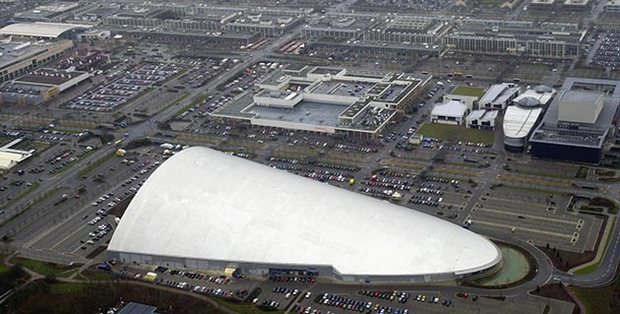Ammonia chillers send costs downhill

Electricity consumption and CO2 emissions are on a slippery slope at one of the UK’s top indoor skiing and snowboarding facilities.
Star Refrigeration has enabled Snozone Milton Keynes, one of the UK’s top indoor leisure attractions, to save 56% on its electricity bills and achieve a drop in emissions of 700 tonnes of CO2, in only four months. This has been achieved thanks to the installation of two air-cooled Azanechillers 2.0, which exceeded Europe’s Eco-Design MEPS requirements by 80%.
The Snozone facility contains 1500 tonnes of snow and ice which have to be maintained at -4°C air temperature for optimal operation. Keeping the environment cool at Snozone is crucial for business, but the building’s previous refrigeration plant was struggling with summer ambient temperatures and a temporary chiller plant was required regularly to support it on a seasonal basis.
Consulting engineers Hulley & Kirkwood designed a strategy for improving the cooling plant while maintaining business continuity. Star Refrigeration’s new ammonia-based refrigeration plant is said to use less energy to produce better skiing conditions.
Kyle Bell, Snozone’s operations director said, “We have two indoor snow centres, and at our Castleford venue we operate with an ammonia based cooler system. We’ve had a good experience with ammonia in this location and found it extremely reliable, and therefore decided it was time to do the same at Snozone Milton Keynes.”
However, there were challenges to overcome – including the setback of the existing plant room being unsuitable for an ammonia plant. The car park was an impractical location so another outdoor location near to the existing plant room was found. Also, in order to identify all safety measures required for installation of the new outdoor packaged ammonia chillers, specialist refrigeration consultants Star Technical Solutions carried out an ammonia hazard assessment.
The location of two 9.7m long chillers on the paved area outside the plant room required careful surveying to ensure that they did not obstruct any underground services or impact on traffic movement or parking adjacent on the site access road. A louvered perimeter wall was specified to screen the chillers from public access that also allowed adequate air flow onto the air cooled condenser coils. It was also necessary to conduct noise surveys as a new hotel was being built close to the building.
The original R404A chillers were replaced with two Star AA415MTE-1 Azanechillers 2.0 rated for 360kW capacity chilling ethylene glycol from -10 to -13C. Vahterus plate and shell evaporators allow a close refrigerant approach while minimising ammonia charge to only 85kg per chiller. Acoustic enclosures around the compressor/motor assembly combined with EC condenser fans present the lowest noise outlay possible for the retrofit installation.
“The new equipment has been easily able to maintain -13°C glycol temperatures in the ski slope even on warmer days, whereas the previous equipment was struggling to achieve -8°C at peak times,” observed Star Refrigeration special projects sales manager Alan Walkinshaw. “However, the plant isn’t necessarily working harder than the previous system, it is just more efficient. Energy savings have been dramatic, with a 56% saving on electricity in the first four months of operation – from 1,511,062 kWh to 661,255 kWh for the same period in 2016.”
